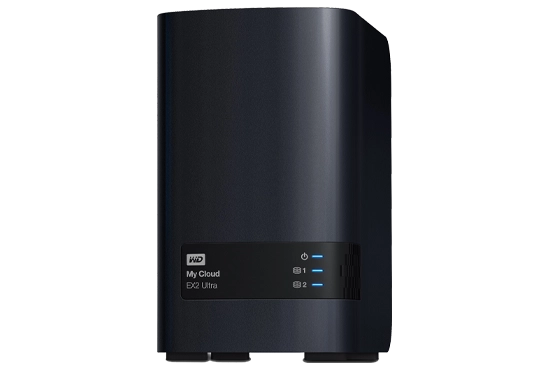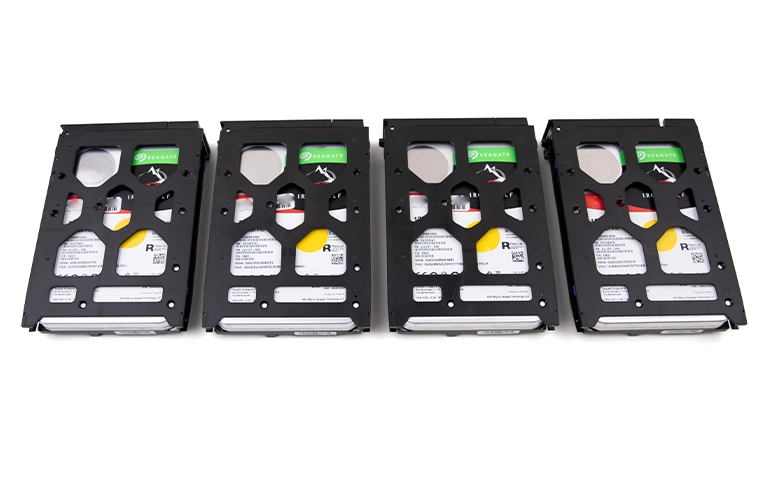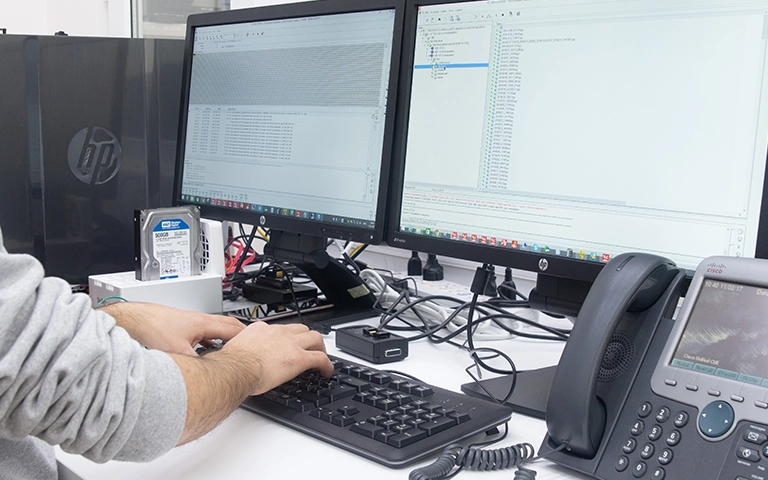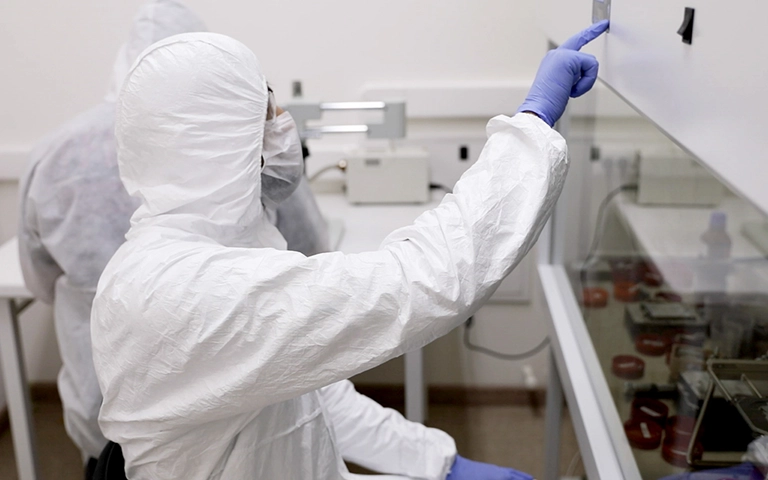The WD My Cloud EX2 Ultra is a widely used two-bay NAS system, popular among small offices and advanced home users. It provides centralised storage with automatic backup, remote cloud access, and RAID options (most often RAID 0 or RAID 1).
When hardware faults or failed rebuild attempts occur, however, recovering data from a WD EX2 Ultra can be highly complex and requires specialist expertise.
In this case, engineers at RAID Recovery Services successfully restored a client’s data after the device became unmountable due to RAID degradation combined with file system corruption.

Case Background: WD EX2 Ultra Not Mounting
A client reached out after their WD My Cloud EX2 Ultra became unresponsive and refused to mount shared folders. On startup, the system displayed a red LED status, while the web interface reported: “Volume Degraded – Data at Risk.”
The NAS was configured in RAID 1 (mirrored) mode with two 6TB WD Red drives. It contained:
Business documents
Family photos and videos
Adobe project files
Bookkeeping records
The client attempted basic troubleshooting by connecting the drives to a Windows PC via a SATA dock. However, the system could not recognise or access the data. At that stage, the full NAS — enclosure and both drives — was sent to RAID Recovery Services for evaluation.
If you are facing a similar issue with a mirrored RAID setup, see our RAID 1 Data Recovery service page for more information.
Understanding WD EX2 Ultra and Its Architecture
The WD My Cloud EX2 Ultra runs on a custom Linux-based operating system (a BusyBox variant) and typically formats its internal drives with an EXT4 file system on a mdadm-managed software RAID.
Key technical characteristics include:
Limited hardware-level RAID management, with most logic handled by the firmware
A proprietary partition structure, including multiple swap and data partitions
Encrypted, cloud-based configuration files stored on internal memory
These design factors significantly increase the complexity of data recovery when the NAS fails, particularly in cases involving corrupted RAID parity or a damaged file system.

Initial Evaluation: RAID Degraded with File System Damage
When the NAS arrived at our lab, our engineers carried out a full assessment:
Drive Imaging: Both 6TB drives were cloned with forensic-grade imaging tools to prevent further wear and ensure data preservation.
SMART Diagnostics: One drive displayed a rising reallocated sector count, indicating early-stage degradation.
RAID Analysis: The RAID metadata was present, but the mirror was no longer synchronised due to read errors and a failed rebuild attempt.
Our team confirmed that the volume could not be safely reconstructed through standard RAID assembly methods because file system corruption was present on both drives.
For more details on how we address complex NAS failures, visit our NAS Data Recovery Services page.
Fast turnaround times for business-critical data
Recovery Strategy: Safe Reconstruction and Data Extraction
Using metadata from both cloned drives, our engineers manually rebuilt the RAID 1 array within a controlled virtual environment to ensure consistency. The more intact disk image was used as the reference, and the mirror was carefully aligned to minimise data discrepancies.
The EXT4 file system contained multiple journal errors and corruption within the inode table. Employing Linux-native utilities alongside proprietary recovery scripts, we repaired superblocks, restored directory structures, and recovered orphaned file clusters.
Once the file system was stabilised, user data was extracted into a secure recovery environment. Restored files included:
Over 200 GB of personal media files
Accounting exports (QuickBooks and Excel)
Project folders containing PSD, INDD, and MP4 files
Encrypted vaults and backup archives

Verification and Delivery
A remote verification session was carried out with the client to confirm recovery results. They verified that:
The original folder structure was fully intact
All recent project files were accessible
No visible corruption was present in video or document files
The complete recovery set was then transferred to a new encrypted 8TB external drive and securely dispatched with shipment tracking and handling instructions.
Recovery Summary
Device: WD My Cloud EX2 Ultra
RAID Type: RAID 1 (2 × 6TB)
Issue: Drive degradation, failed rebuild, EXT4 corruption
Recovery Time: 3 business days (expedited service)
Success Rate: 100% of user-requested data successfully recovered
Trust the experts with proven results
Best Practices for WD My Cloud EX2 Ultra Users
To reduce the risk of future data loss:
Back up data regularly to an external device or cloud service — remember, WD My Cloud provides centralised storage, not a true backup
Avoid initiating rebuilds without first verifying the health of both drives
Monitor SMART attributes frequently via the WD dashboard or trusted third-party tools
Use an uninterruptible power supply (UPS) to guard against power interruptions that may corrupt the file system
Never force-remove drives from a degraded volume
Attempting a rebuild without proper diagnostics can result in irreversible data loss. For further guidance, see our detailed article on the risks of rebuilding a RAID array without expert evaluation.

Need Help with WD NAS Recovery?
If your WD My Cloud EX2 Ultra or another WD NAS system has failed, avoid attempting to rebuild or reinitialise the volume.
Contact RAID Recovery Services for a no-obligation evaluation. We specialise in recovering data from WD devices, RAID arrays, and corrupted file systems.
Our engineers are equipped to manage even the most severe NAS data loss scenarios, ensuring the highest possible chance of recovery.